
Are you a course creator looking to expand your reach and grow your business online? With the rise of e-learning, now is the perfect time to take advantage of the opportunities in the online course market. However, selling and delivering courses online requires a different approach compared to traditional in-person teaching. In this article, we’ll share 9 tips to help you successfully sell, market, and deliver your courses online, so you can reach a wider audience and increase your revenue.
How to sell market and deliver courses online
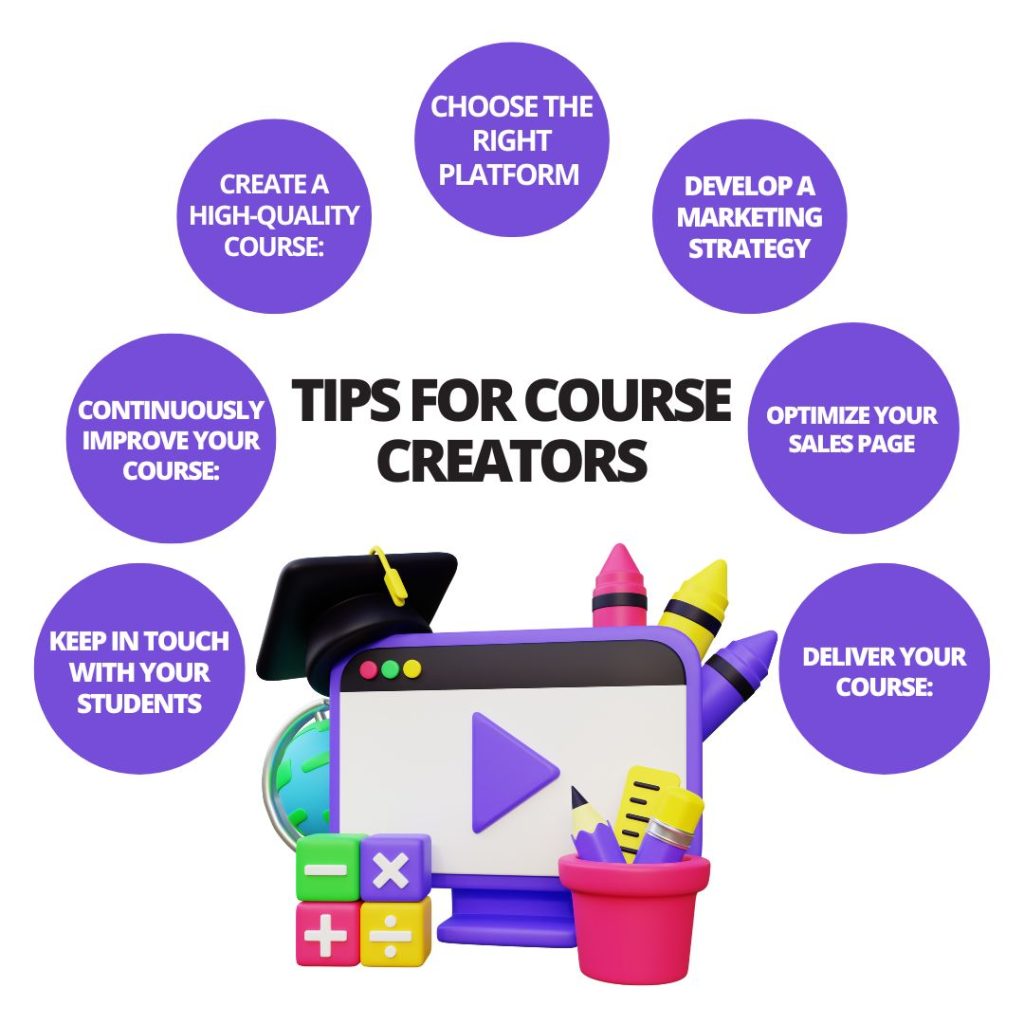
Selling, marketing, and delivering courses online can be a challenging task, but with the right tools and strategies, it can be done effectively. Here are some steps you can take to sell, market, and deliver your courses online:
- Create a high-quality course:
The first step in selling, marketing, and delivering a course online is to create a high-quality course that meets the needs of your target audience. This means creating engaging content that is well-organized and easy to follow, and providing plenty of resources and support to help your students learn. - Choose the right platform:
There are many different platforms available for selling, marketing, and delivering online courses, such as Thinkific, Teachable, and Kajabi. Choose a platform that meets your needs and budget, and that offers the features you need to create, market, and sell your course.
A good platform for course creators should have user management, course creation tools, payment processing, marketing and sales tools, analytics and reporting, accessibility and customization, and technical support. In summary, it should provide all the necessary tools and resources to create, sell, and manage online courses. - Develop a marketing strategy:
Once you have your course ready, you’ll need to develop a marketing strategy to promote it. This can include creating a website, using social media, and running ads to reach your target audience. You can also use email marketing, webinars, and affiliate marketing to promote your course. - Optimize your sales page:
Your sales page is the first impression that potential students will have of your course, so it’s essential to make it as compelling as possible. This means including a clear and compelling headline, using persuasive language, and providing plenty of details about the course, including testimonials from previous students. - Deliver your course:
Once you’ve sold your course, it’s time to deliver it to your students. This means providing access to the course materials, hosting live Q&A sessions, and providing support and resources to help your students learn. - Continuously improve your course:
Even after you have launched your course, it’s important to continuously improve it based on feedback from your students. This means making changes to the course content, format, and delivery methods to ensure that your students are getting the best possible experience. - Keep in touch with your students:
Keep in touch with your students through email or social media to keep them engaged, and also to keep them informed about any updates or new resources that you might have added to the course. - Monetize your course:
Once your course is ready, you can monetize it by selling it on your website or on other platforms such as Udemy, Skillshare, or Coursera. - GeUtilize SEO optimization to improve the visibility of your courses on search engines:
Attract more potential students to your online courses by optimizing your website for search engines. By utilizing effective SEO techniques, you can increase your courses’ visibility and rank higher in search results, making it easier for potential students to find your courses. Learn how to research and incorporate relevant keywords, improve your website’s user experience, and build high-quality backlinks to drive organic traffic and improve your courses’ online presence.
By following these steps, you can successfully sell, market, and deliver your courses online. It’s important to keep in mind that this process takes time, effort and patience.

Simple techniques to improove your course sales
Also keep in mind when optimizing your course for sales:
- Define your target audience and tailor your courses to their needs.
- Create engaging course previews and use social media to promote your courses.
- Offer free samples or trial periods to encourage students to sign up.
- Build a strong personal brand and establish yourself as an authority in your field.
- Partner with influencers or other course creators to reach a wider audience.
- Utilize email marketing to keep students engaged and informed.
- Offer multiple payment options to make it easy for students to enroll in your courses.
- Provide a seamless and user-friendly platform for students to access and complete your courses.
- Encourage students to leave reviews and provide valuable support to ensure student satisfaction.
- Continuously measure and analyze course performance to identify areas for improvement and make data-driven decisions.
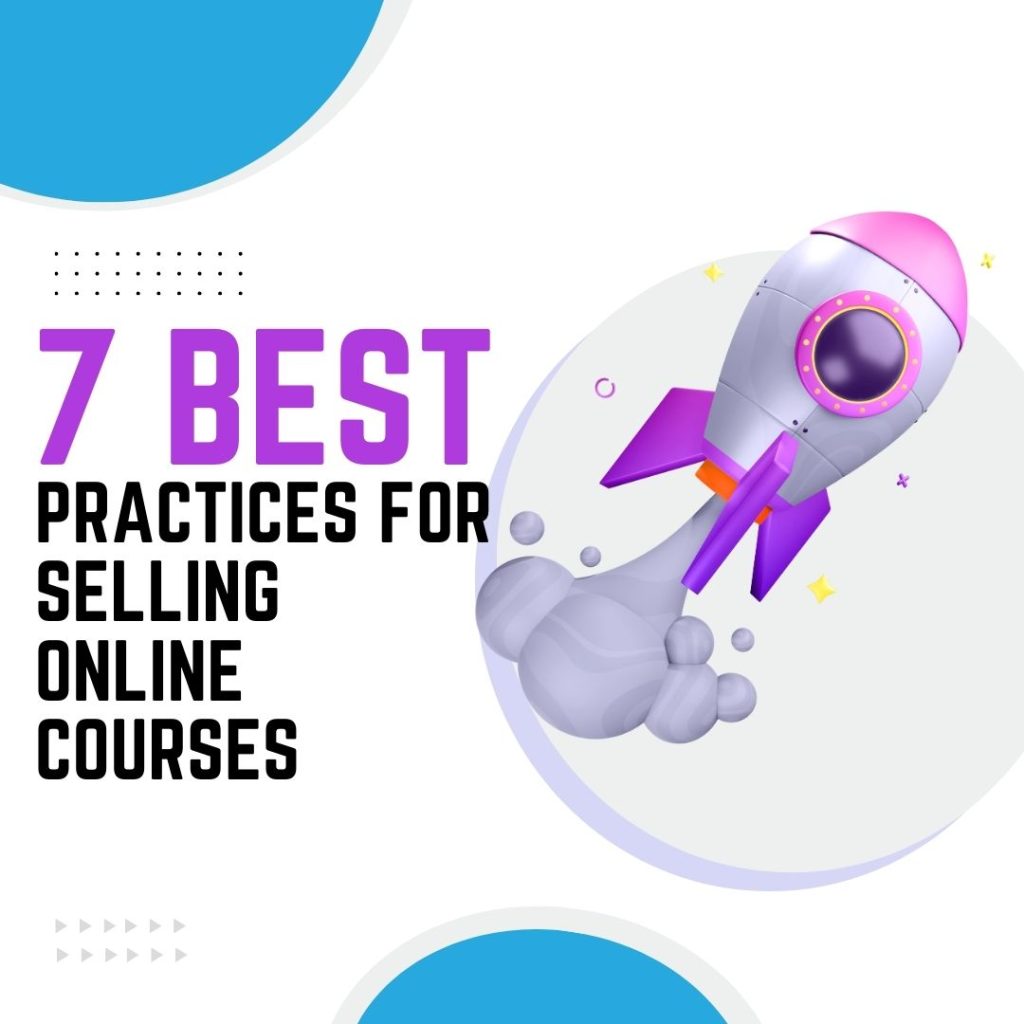
7 Best practices for teaching online and selling online courses
In addition to the steps I previously mentioned, there are a few other things you may need in order to successfully sell, market, and deliver your courses online:
- A strong brand:
Having a strong brand can help you stand out in a crowded online market and make it easier for people to find and remember your course. This includes creating a unique logo and website design, as well as developing a consistent voice and messaging for your course. - A niche target audience:
Identifying and targeting a specific niche audience can help you create a more focused and effective marketing strategy, and also helps you to create a course tailored to their needs. - A good pricing strategy:
Setting the right price for your course is crucial in order to attract buyers. Consider your competitors pricing, your course’s value and the audience’s budget. - A clear value proposition:
Communicating the value of your course clearly and effectively is essential for convincing potential students to enroll. This means highlighting the benefits of taking your course and addressing any objections or concerns potential students may have. - A supportive community:
Building a supportive community of students can help keep them engaged and motivated throughout the course, and also can provide you with valuable feedback and testimonials. - Continual learning and improvement:
As technology and the online market evolves, it’s important to keep learning and improving your skills, knowledge, and strategies for creating, marketing, and delivering your course. - A good Support system:
Providing good customer service and technical support can help ensure that your students have a positive experience with your course and are more likely to recommend it to others.
By keeping these things in mind, you can create a comprehensive strategy that will help you to succeed in selling, marketing, and delivering your courses online.
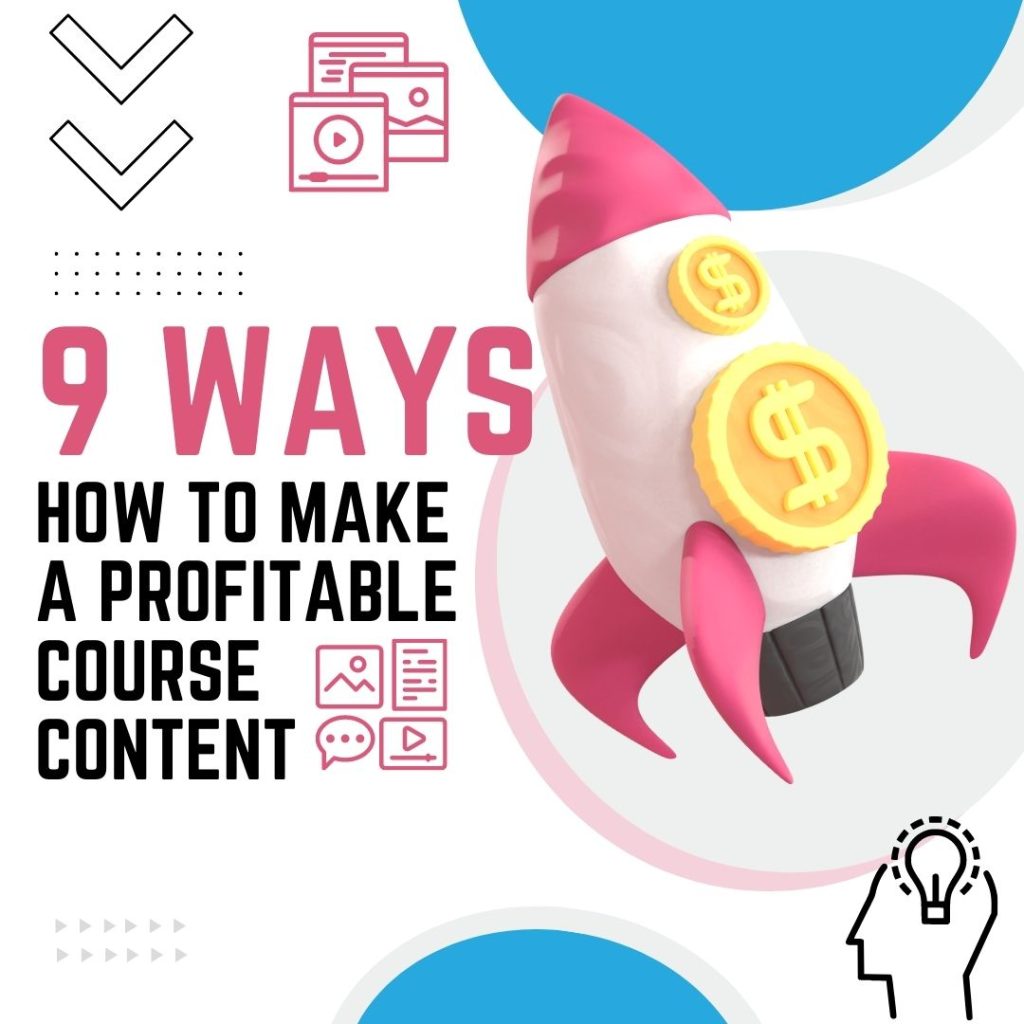
9 ways how to make a profitable course content ?
Creating online course content and making money selling courses online can be a rewarding endeavor, but it does require effort and planning. Here are some steps you can take to create online course content and make money selling courses online:
- Identify a profitable niche: The first step in creating an online course is to identify a profitable niche that you are passionate about and that has a proven demand. Research the market and identify what topics people are interested in learning about and what gaps currently exist in the market.
- Define your target audience: Once you have identified your niche, define your target audience. Identify their needs, pain points, and interests. This will help you to create content that is tailored to their specific needs and will help you to market your course more effectively.
- Research and create your course content: Once you have defined your target audience, research and create your course content. This should be high-quality, informative, and engaging. Consider using a variety of multimedia, such as videos, audio, and text, to keep your students engaged.
- Test your course: Before launching your course, test it with a small group of beta testers. This will help you to identify any issues or areas that need improvement, and it will also help you to get feedback on the course content.
- Create a sales page: Once your course is ready, create a sales page to promote it. Your sales page should be compelling and should clearly communicate the value of your course.
- Build an email list: Build an email list of potential students by offering a free resource or incentive in exchange for their email address. This will allow you to promote your course to a targeted audience and increase your chances of making sales.
- Launch and promote your course: Once your course is ready, launch it and promote it through various channels such as social media, email marketing, and paid advertising.
- Monetize your course:
There are several ways to monetize your course such as charging a one-time fee, offering a subscription-based model, or using an upsell strategy to sell additional resources. - Continuously improve and update your course:
As technology and the online market evolves, it’s important to keep learning and improving your skills, knowledge, and strategies for creating, marketing, and delivering your course.
By following these steps, you can create high-quality online course content and make money selling courses online. However, it’s important to keep in mind that this process takes time, effort.
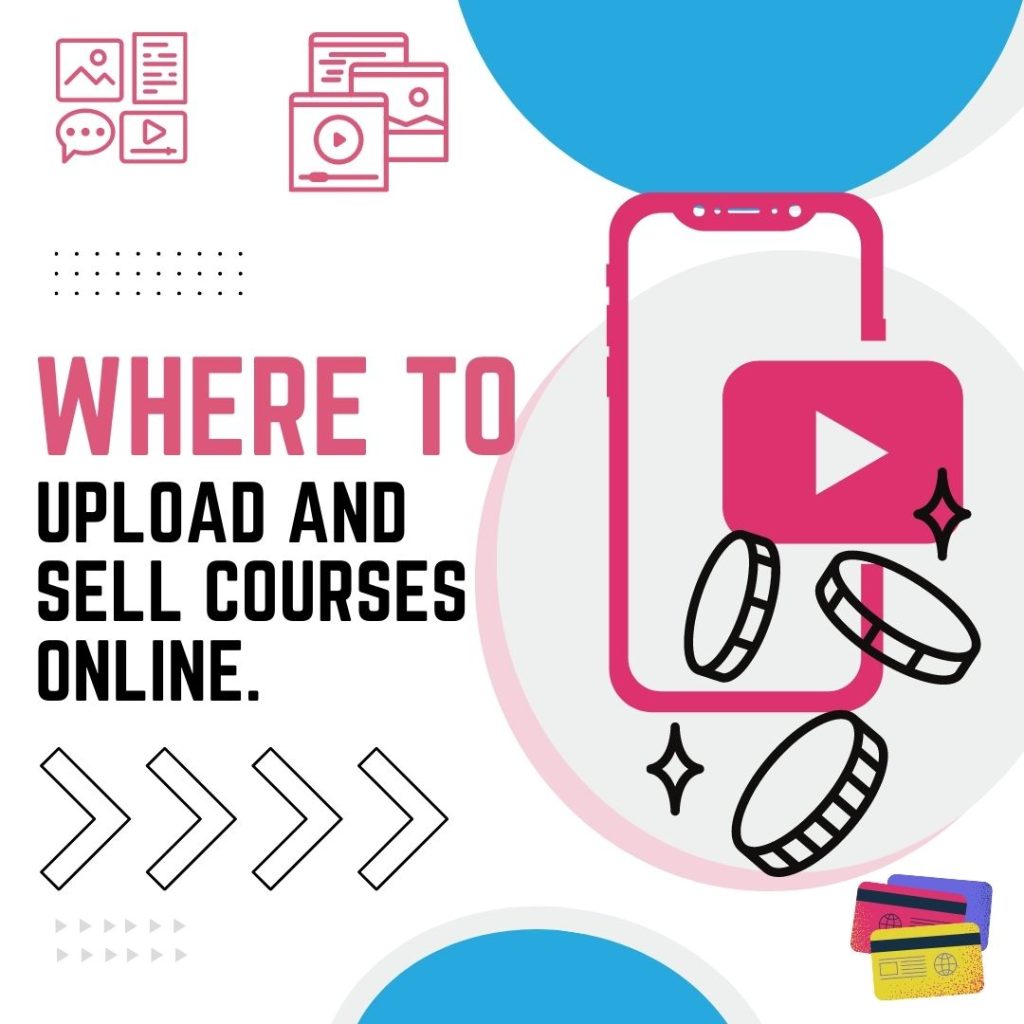
Where to upload and sell courses online.
The best platform to sell market and deliver courses online.
Here is a list of 3 online course platforms where you can marketize and sell your course:
- Systeme.io:
This is an all-in-one platform that allows you to create and sell online courses, coaching programs, and membership sites. It has a variety of features such as course creation, easy integration with popular payment processors, creation of landing pages and email marketing tools, making it easy to deliver and monetize your coaching services, and courses. It gives you the controlo over all stages of making your course, marketing and sales process. And has a free plan to test it out. Go to systeme.io - Thinkific:
This platform allows you to create, market, and sell your online course, as well as manage your students and track their progress. It offers a wide range of features such as hosting, course creation, and marketing tools, as well as integration with popular payment processors. But is more limited when it comes in marketing tools compared to Systeme.io. Look at this comparation article of the best alternatives for course cration. - Udemy:
This platform is a large marketplace for online courses. It offers a variety of features such as course creation, marketing tools, and analytics, making it easy to monetize your course, but you don’t have any control over your sales.
These platforms offer a range of features that make it easy to marketize and sell your course. They also have a large user base which increases your chances of selling your course. Look at the difference between
Here are some pros and cons of using Thinkific, Udemy, and Systeme.io to sell your online course:
How is Systeme.io for selling, marketizing and delivering courses online: :

Pros:
- All-in-one platform for creating, marketing, and selling online courses, coaching programs, and membership sites
- Advanced features such as course creation, payment processing, and email marketing
- Email Funnel building
- Ability to create custom landing pages and email campaigns
- Detailed analytics to track sales
- Lower pricing plans than other platforms
- Has a free plan with 90% of the options opened
Cons:
- You need to drive traffic to your site and do advetising
- Limited community features and interaction between students
- Higher pricing plans than other platforms
More in the Systeme.io Review.
How is Thinkific platform to sell market and deliver courses online?

Thinkific is a popular platform for creating, marketing, and delivering online courses. It is designed to make it easy for anyone to create and launch an online course, regardless of their technical skills or experience.
Pros:
- You have full control over the design, branding, and pricing of your course
- Advanced features such as membership sites and integrations with payment processors
- Ability to create custom landing pages and email campaigns
- Detailed analytics to track student progress and engagement
- Advanced student management tools
- Support for SCORM and Tin Can API content
Cons:
- Limited marketing and promotion capabilities compared to other platforms
- Limited community features and interaction between students
- Higher pricing plans than other platforms
One of the key features of Thinkific is its course creation tools. The platform provides a range of templates and tools that make it easy to create professional-looking and engaging online courses. You can add videos, audio, text, images, quizzes, and more to your course, and the platform also supports SCORM and Tin Can API content.
Another important feature of Thinkific is its marketing and sales tools. The platform includes a built-in affiliate program, marketing automation, and email marketing tools, as well as integration with popular payment processors such as Stripe, PayPal, and more. This makes it easy to promote and sell your course to a wide audience.
Thinkific also includes a number of tools to help you manage and track your students’ progress. The platform includes a built-in student dashboard, where students can access their course materials, track their progress, and communicate with their classmates. Additionally, the platform includes a variety of analytics and reporting tools that allow you to see how your students are progressing and make improvements to your course as needed. You can also check the comparison article of Thinkific vs Teachable vs Kajabi, the best LMS platforms. A deep comparison between the three platforms.
The platform also offers a variety of customization options, such as the ability to add custom domains, create custom landing pages, and more. Thinkific also offers a mobile-responsive design, so your course can be accessed on any device.
Overall, Thinkific is a powerful and user-friendly platform for creating, marketing, and delivering online courses. Its course creation tools, marketing and sales tools, and student management tools make it easy to launch and manage an online course, and its analytics and reporting tools provide valuable insights into student engagement and progress. The platform also offers a range of pricing plans, including a free plan, which makes it accessible to a wide range of users.
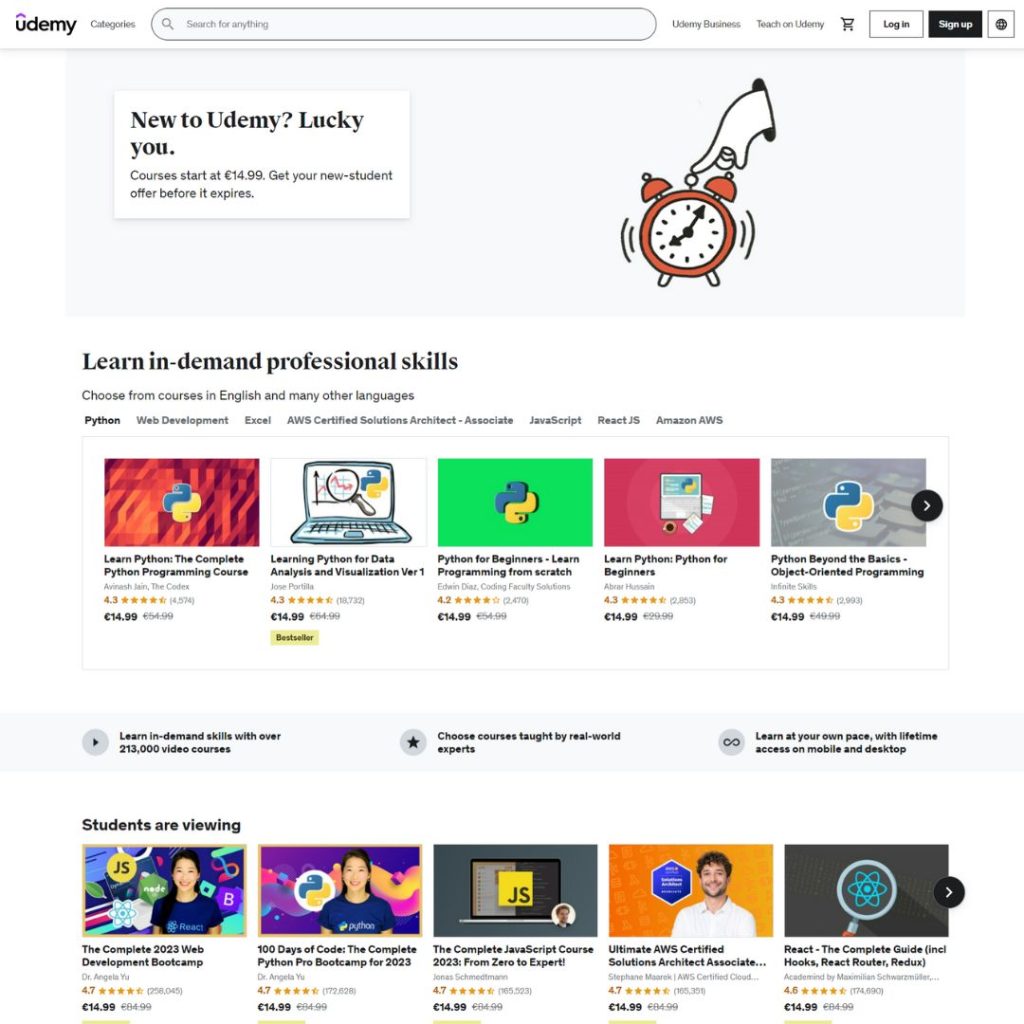
How is Udemy for selling, marketizing and delivering courses online:
Pros:
- Large audience and potential reach
- No monthly fees, they take a part of your revenue
- Built-in marketing and promotion tools
- Easy to create and launch a course
- Detailed analytics and reporting
Cons:
- Limited control over design and branding
- Limited control over pricing and revenue sharing
- Limited student management and engagement features
Ultimately, the best platform for you will depend on your specific needs and goals. Consider the features and pricing of each platform, as well as your target audience and marketing strategies, when making your decision.
